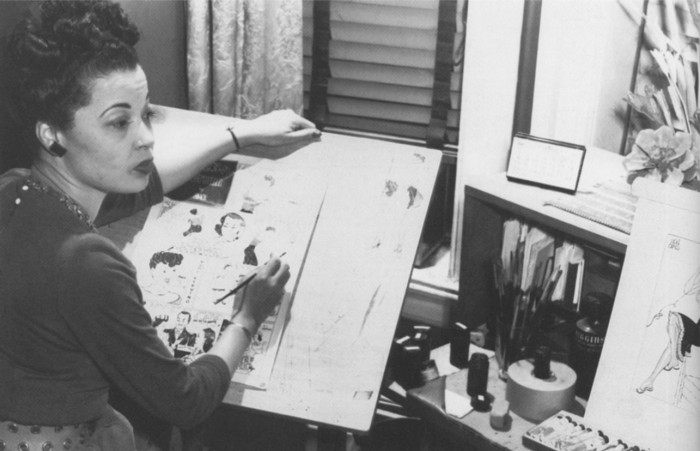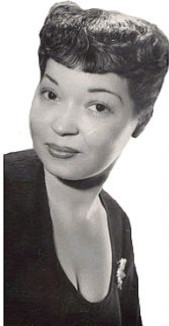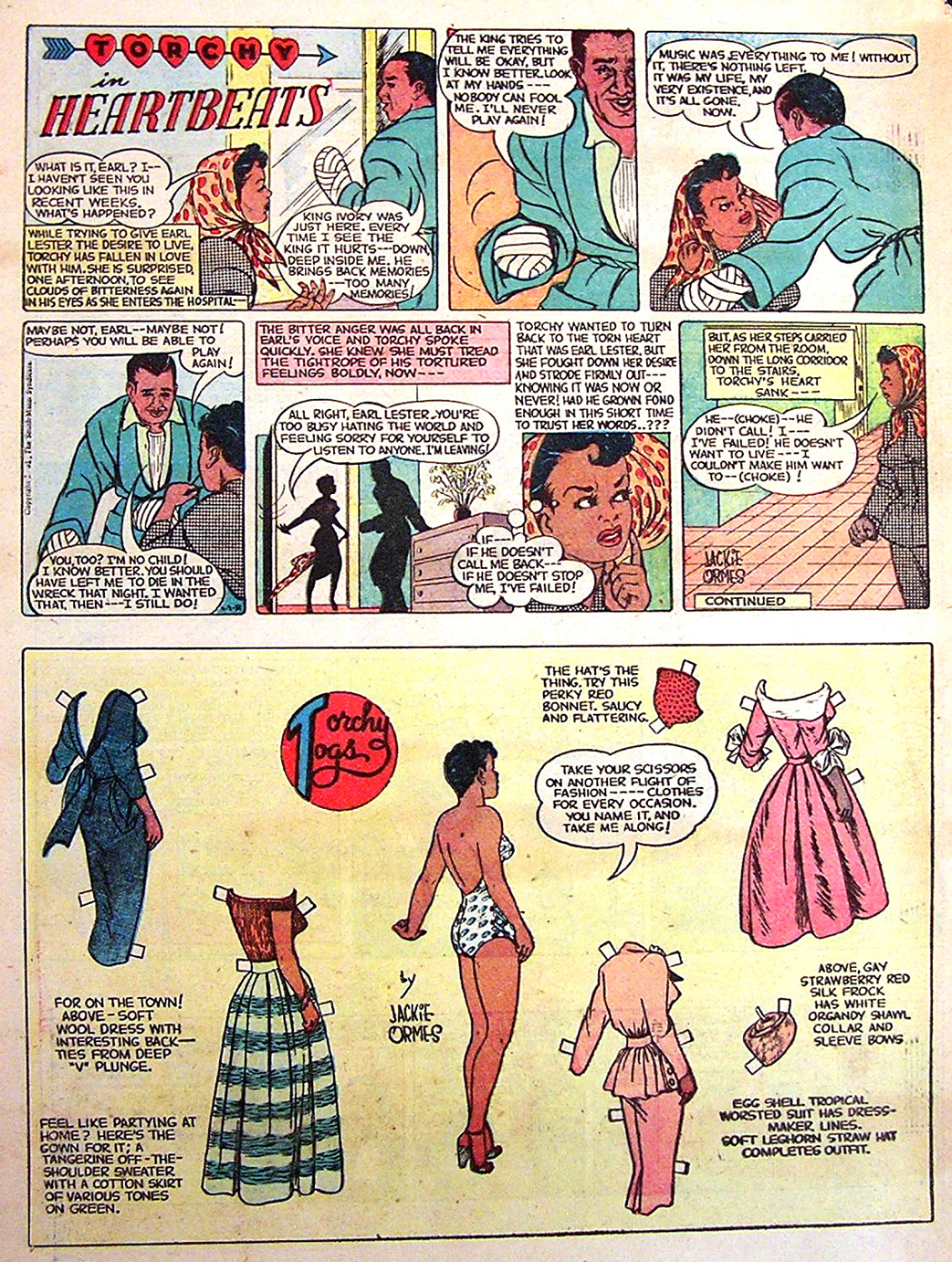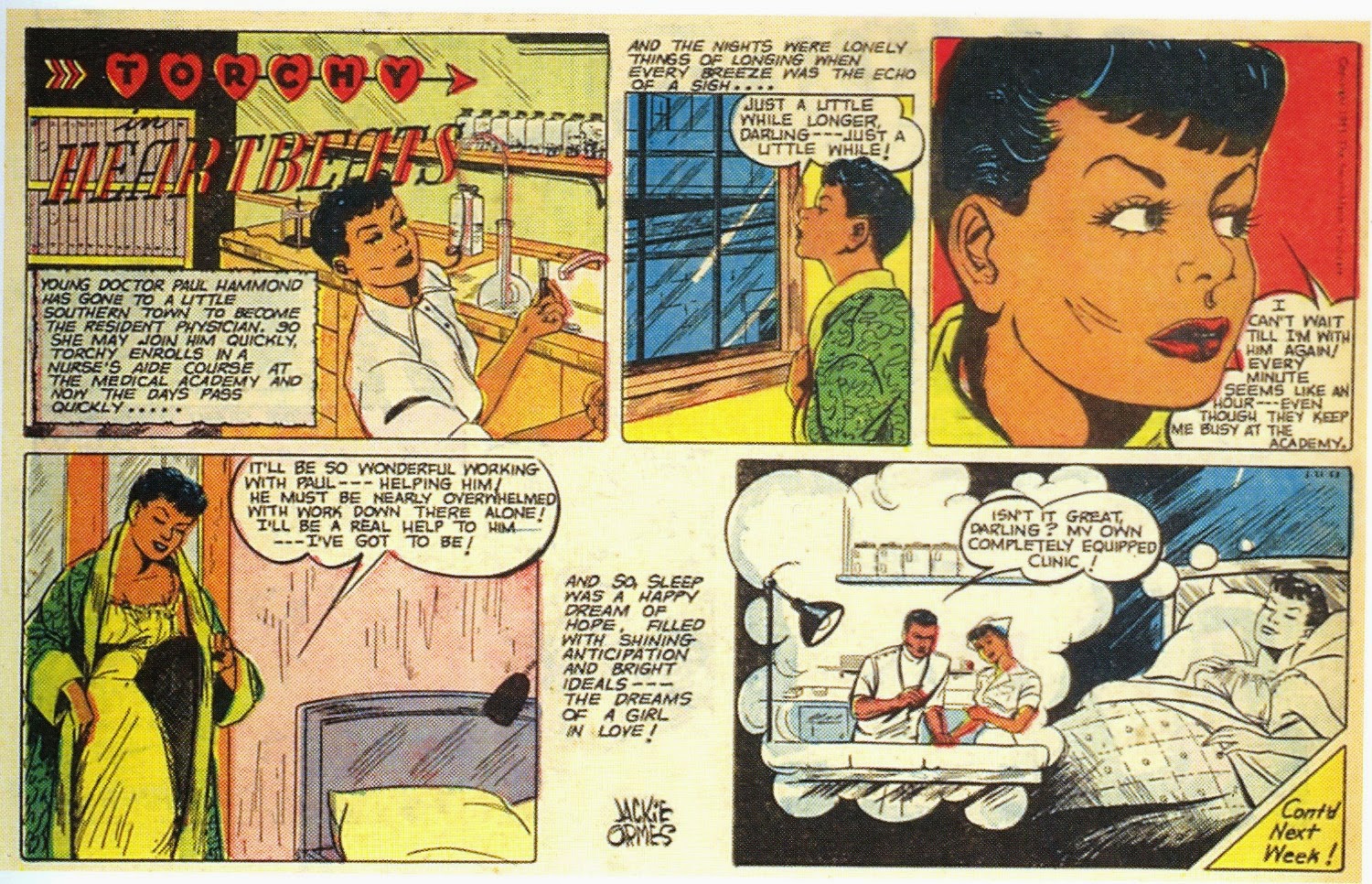Jackie Ormes (August 1, 1911 – December 26, 1985) was born Zelda Jackson in a small town outside Pittsburgh. She was a self-taught artist who had several successful comic strips and cartoon characters, and they were precedent-setting. The characters were fashionable and professional. Often the focus of a strip was on humor, but Ormes was happy to use her comics as a platform for commentary on society’s ills as well. Her targets were frequently racial issues, but in 1953-54, her comic strip character, Torchy, took on environmental pollution, particularly as it was occurring in black neighborhoods. This was long before strips like Pogo had become the “issue” strip we think of today.
Her first job was as a proofreader for the weekly African-American newspaper, The Pittsburgh Courier. In 1937 her comic strip character, Torchy Brown, was appearing in “Dixie to Harlem,” a strip about a teenager from Mississippi who travels to Harlem to perform at the Cotton Club. The strip was part action, part adventure, and part comedy, and it frequently featured the struggles that Ormes observed among African-Americans of the day.
Her work was unique and wholly unprecedented. Not only were her lead characters female, they were strong, elegant, intelligent, urbane, opinionated and witty and often leading extremely glamorous and cultured lives. It has been said that they were very like the artist herself. They challenged the derogatory caricatures of black people, and especially black women, which usually appeared in comics at that time.
In 1936, Jackie married Earl Ormes, a hotel manager, with whom she enjoyed a happy marriage. The couple moved to Chicago in 1942 and Jackie soon became an important figure in African-American society there. She began writing as a columnist for the Chicago Defender, one of the USA’s leading black newspapers, and her cartoon strip, Candy, about a smart and wise-cracking housemaid, also appeared in the paper for a run of several months.
By the end of the Second World War, Jackie’s work was back in the Pittsburgh Courier. This time with a new single-panel strip called Patty-Jo ‘n’ Ginger. It featured a big sister / little sister duo with Ginger being the elegant and beautiful older sister, and Patty Jo the precocious and outspoken younger sister, who was also solely responsible for narration. It ran for eleven years.
The strip’s popularity led to the Terri Lee Doll Company producing a Patty-Jo doll in 1947. It was the first American black doll to have an extensive line of clothes and, unlike similar products which tended to be gross caricatures, it represented a real child. They sold in the thousands and today are sought-after collectors’ items. While Patti Jo was certainly not the first African-American doll, it was one of the early ones that wasn’t a Mammy or a “pickaninny.”
In 1950, Torchy Brown made a come-back when the Pittsburgh Courier launched an eight-page full colour comic insert. In her new strip, Heartbeats, Torchy was as brave and confident as ever. Although the strip was ostensibly about Torchy’s search for romance, she still provided a vehicle through which Jackie could express her political views. Ormes used her character as a great looking role model who also took on issues like sexism, racism, and the polluting of the environment.
She continued the cartoon strip until 1956.
Interestingly, her presence at a bookstore where a couple of Communists were thought to have spoken is what was supposed to have led to the FBI opening a file on her in the late 1940s.
Ormes was celebrated in Chicago’s black social and fashion circles. She was also on the board of directors of the DuSable Museum of African-American History and Art. Ormes’ strips were syndicated in Black newspapers across the country, making her the only nationally syndicated Black woman cartoonist until the 1990s.
Ormes suffered from rheumatoid arthritis in her later years, which would eventually impact her ability to draw. She died from a cerebral hemorrhage on December 26, 1985. More than two decades later, the University of Michigan Press published the book Jackie Ormes: The First African American Woman Cartoonist, by Nancy Goldstein (2008). The DuSable Museum of African American History, which Ormes helped found, also houses her papers.
Sources:
http://americacomesalive.com/2013-10-22-jackie-ormes-1911-1986-first-african-american-female-cartoonist
http://www.theheroinecollective.com-jackie-ormes/
http://www.aaregistry.org-historic_events/view/jackie-ormes-first-cartoonist-who-portrayed-black-women-non-stereotypical
https://www.biography.com/people-jackie-ormes-021216







3 comments
Great article on Mrs. Ormes – I never heard of her, until I saw your post on the Google feature page.
Like her – I too worked for the Pittsburgh Courier, and grew up in a small town outside of The Burgh.
I wonder what’s the name of her small town?
Do you happen to know?
BTW: Who is the Editor of this online publication? Very Good job, BTW !
I agree with the other commenter, I had never heard of her and this was very interesting read. I remember too, how I loved to cut out those picture models and dress them up as a kid. Carry on Ms. Ormes!
Great info. Thank you